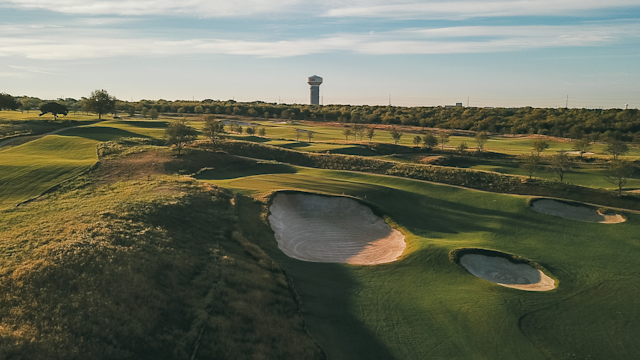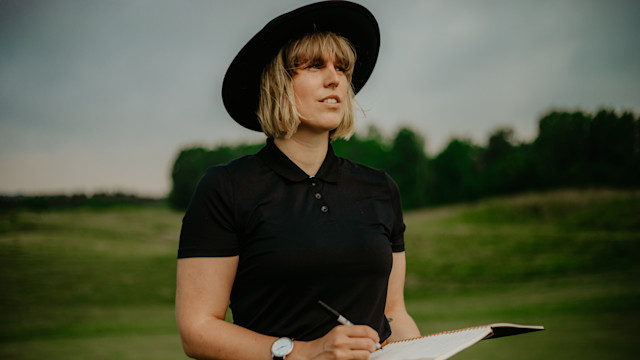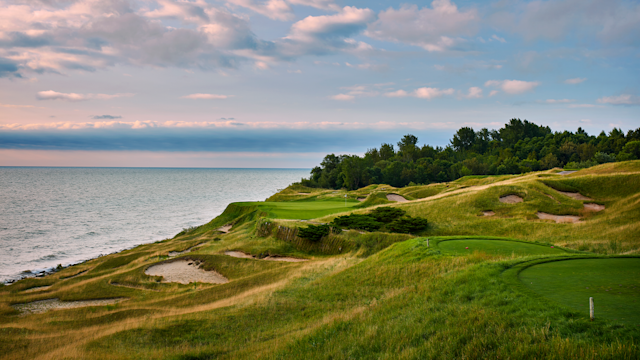Game Changers
Beau Welling on Getting Started in Golf Course Design and Building Courses for Everyone
By Beau Welling
Published on

(Photo courtesy of Beau Welling Design)
I grew up playing and loving golf but was always interested in course architecture and the strategy behind the game – I just never really saw it as a potential career.
I went to college at Brown University and played on the golf team. Brown is kind of a whacky place – which I love – and students are encouraged to take control of their courses of study. I was debating between studying art or physics when I literally had an epiphany that golf course design drew on elements of both fields.
The beginnings of Beau Welling Design
As Brown students, we could take classes across the street at the Rhode Island School of Design, which had a landscape architecture program, which I enrolled in promptly. Around that same time, my father was involved in a development project outside my hometown of Greenville, South Carolina, where Tom Fazio had been hired to design the new golf course for the Thornblade Club.
I called Tom and ended up interning for him in the summer which really opened my eyes to golf course architecture and the business of golf design. The golf design “hook” was set that summer, so I took time off from Brown to go to Ireland to study at Trinity College in Dublin. Doing so allowed me to get an incredible (and intentional) exposure to the amazing links golf of Ireland, and made me realize something – course design might be worth pursuing professionally.
After graduation of Brown, however, there was a bit of a recession, so I decided to switch course and pursue an International MBA at the University of South Carolina thinking that understanding business would be beneficial to a golf design career. Instead, I ended up getting fascinated by securities and markets, and I ended up starting my career in investment banking upon graduation.
A few years later, Tom called and coaxed me back into golf course design by offering me a position helping to manage his firm. It was an amazing experience that really indoctrinated me into the world of golf course architecture – truly at the highest level. I spent roughly ten years with the Fazio team before going out on my own to start, the very creatively named, Beau Welling Design in 2007.
Golf course design has really allowed me to explore my talents as a golfer but also use my artistic and creative skills alongside those that are more scientific and technical. In other words, the perfect result to that debate I had about what to study back at Brown. I feel very lucky to get to make it my career.
Courses for everyone to enjoy
My team and I have a shared design philosophy with several core pillars: playability, strategy, drama/thrill, variety and aesthetics. It could be argued that all of these are important to any great golf course, but each is a large consideration when we are routing and designing a new course or working with an existing one.
Playability and strategy, in some ways, are most important and largely go together. We are “big tent” people in that we want to design courses that truly everyone can enjoy. We always seek to create a very playable design utilizing wide fairways and strategic hazards and bunkering. By doing so, we look to not overly penalize higher handicappers who need width, but also create challenging areas and preferred locations or angles within the width for players looking to score.
We also believe strongly in robust and exacting green complexes, which reinforce the preferred locations in landing areas and use them to emphasize shot values, execution and creative thinking. At the same time, we design the greens to be very approachable for shots on the ground or with lower trajectories. By doing so, good players are tested and required to hit precise shots while higher handicappers have a playable route to the greens surface.
As for variety, we want to create holes that are memorable, eliminate “sameness” between holes with direction and green shape, and make sure different clubs are used. On drama and thrill, we think that everyone loves the feeling of skirting a hazard for a better angle or advantage on a hole or driving the green on a par 4. We want to create some great risk-reward moments and shots. They’re fun!
Finally, on aesthetics, I learned a great deal from Tom Fazio and ultimately feel the creating a beautiful landscape that blends with nature is something that is the heart of all of our projects.
Dr. Alister MacKenzie has a quote that we love and often reference: “The ideal course is surely one that affords the greatest pleasure to the greatest number.”
We believe in that sentiment strongly.


